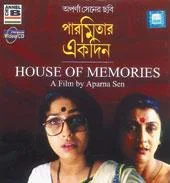Cuties (Mignonnes, French; 2020)
Back in secondary school, my friend AK, and I were engaged in an in-depth discussion on the topic of American situational comedies which later became to be abbreviated as sitcoms. AK was adamant that the depictions of teenagers, then in family dramas, were detrimental to the behaviours of people. The fighting back, the rudeness, the promiscuity of teenagers, the docile nature of parents were bound to have change on the local society. This would happen even though the storyline would indicate poetic justice at the end. Even though good virtues would prevail over bad, viewers tend to remember the bank heist rather than how the robbers suffered for their feat - their unsettling life whilst being on the run and the incarceration later on.
The same thing happened in this film. Even though the movie's storyline is genuine in highlighting the current societal obsession in adultification of preteens, the cinematography and wardrobe department just conveyed the opposite message. Viewers from the world over are up in arms objecting to the portrayal of 11 years pre-pubertal girls in age-inappropriate attires, twerking and engaging in dance moves that leave nothing to the imagination but are overt sexual postures ala-WAP.
After irritating Hindu audiences in India, now American viewers have joined the chorus of people who have started supporting #CancelNetflix. They accuse Netflix of promoting child pornography and have requested the FBI to initiate investigations along that line.
Depiction does not equate to an endorsement, they say, but as mentioned earlier, viewers only remember the awe factor. Five years down the line, people would only remember this movie as one which showed tween twerking, not the fact that it brought to the surface the constant peer pressure, the desire to fit in and the stress of coming of age.
No one would remember that this film also showed how children of immigrants find it so difficult to be accepted by the natives of their newfound homes. Nobody can understand why the immigrant parents are hellbent on keeping alive their age-old traditions as their traditions failed to make a utopia in their homeland. It is the pull factors in the new countries that drew them like bees to the pollen. Indeed it is idiotic to consider that people in the new country are practising some kind of inferior way of life. It would not have made them so open-hearted to accept immigrants and bear with all the baggage that comes with them.
No one would remember that this film also showed how children of immigrants find it so difficult to be accepted by the natives of their newfound homes. Nobody can understand why the immigrant parents are hellbent on keeping alive their age-old traditions as their traditions failed to make a utopia in their homeland. It is the pull factors in the new countries that drew them like bees to the pollen. Indeed it is idiotic to consider that people in the new country are practising some kind of inferior way of life. It would not have made them so open-hearted to accept immigrants and bear with all the baggage that comes with them.
The film also shows the hypocrisy of societies that expects women to play second fiddle to all the antics of man whilst still appearing happy about it as if it the will of God to be subservient to men and live without a brain. On the one hand, it expects women to be pure but at the same time, objectifies women to fill the lust of men. This way of thinking is not limited to societies perceived as 'backwards'. Even progressive communities are guilty of this.
This presentation is a cautionary tale to remind us of our constant craving to push the limit of what is accepted as the norm. There was a time when there was no such thing as childhood. Little people feel grateful to be born and fed. They watch and learn and fit into societies as contributing individuals. Then the community decreed that little people need to be educated and have to have a proper childhood that develops character. Their biological requirements took a backburner. They had much more to achieve in life. Then the bar was progressively lowered. Social interactions and mingling of sexes were the standards. With affluence and reduction of responsibilities on the young shoulders, their interests peaked elsewhere.
We should not forget that it is not easy for teenagers to grow up in the digital era. With so much scrutiny by peers and imaginary 'friends' in the social media sphere as well as pervasive cancel culture that is out to crucify anyone who does not conform to the general flavour of the month, emotional health can never be serene. At an age when they themselves are unsure of many things around them, the last persons they would listen to are adults. All the life experiences that adults preach will only fall on deaf ears. No matter how self-defeating their peers' action may be, it is nevertheless, more appealing to their age-group.
There is a difference in reading about young girls engaging in precocious activities than viewing them on screen. What is more unpalatable is when it is performed by underaged actors. In the name of art and wanting to pass a public message, is this justified?
There is a difference in reading about young girls engaging in precocious activities than viewing them on screen. What is more unpalatable is when it is performed by underaged actors. In the name of art and wanting to pass a public message, is this justified?























